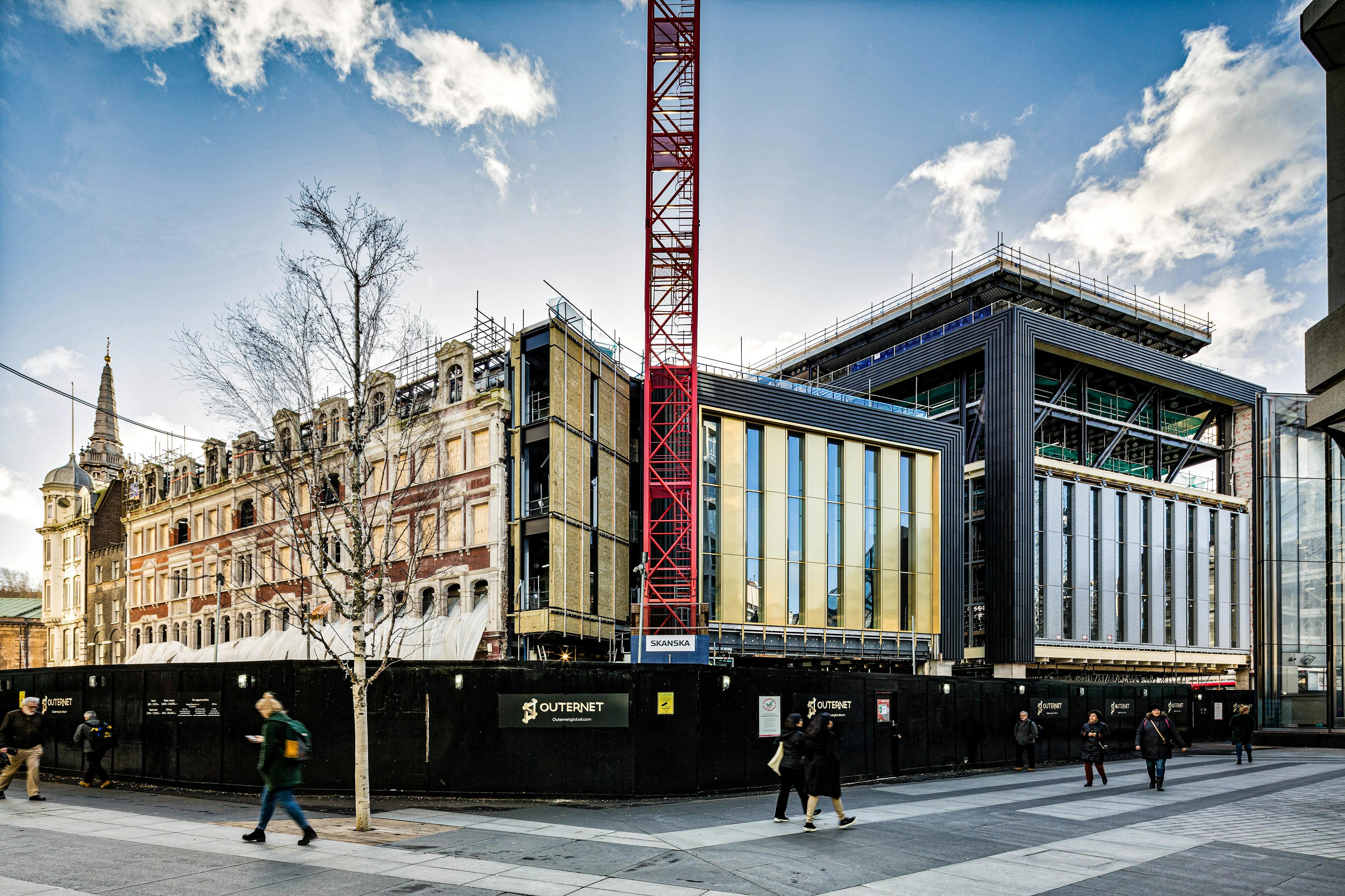
St Giles Circus
Careys was awarded works for four superstructure buildings which will compromise an urban gallery, commercial spaces, residential and a hotel, as well as a four-storey basement which will be a new events venue.
Client
Consolidated DevelopmentsLocation
LondonPrincipal Contractor
SkanskaThis project entails a range of different methods of construction and many challenges. Core A is being constructed using a slipform method, with Core B and the 22 Denmark Street Core using jumpform - A and B will also have a tin deck superstructure, and are supported on a number of plunge columns. Buildings C and D will be traditional superstructures.
To construct the four storey basement a traditional top-down excavation method was used, with telescopic, vertical-reach excavators working via mole holes in the high-level slab to remove the spoil. Smaller machines and dumpers were used on the lower levels to bring the spoil to the bottom of the mole hole for subsequent removal.
Delivering a complex four-storey basement in close proximity to Crossrail and London Underground assets
Delivering a complex four-storey basement in close proximity to Crossrail and London Underground assets
This top down basement is being constructed right over the Crossrail’s new Elizabeth Line, and we are working within 2 meters of the Northern Line escalator within Tottenham Court Road Station. Designers had to ensure that the slabs would be able to take the weight of the formwork deck when working over the escalator. In order to restrain any heave that could be potentially induced from excavating the basement area above the Elizabeth Line 0.9m diameter deep piles have been installed along the sides of the Crossrail tunnel, this is forming a retaining wall for Basement B2 excavation.
Our BIM team developed clash detection animations to ensure that the excavation works to form the basement would not encounter any difficulties. This helped us to arrange the site logistics better, as we were able to see where best to position our clamshell excavator and machinery so that it did not connect with the steel frame. This positioning ensured flexibility and much needed space around the mole hole which enhanced our ability to actually remove the muck.
For construction of the superstructures, Core A was constructed using a slipform method, with Core B using a jumpform – often in challenging logistical circumstances. In order to complete the contract to the high standards that we demand of ourselves, we called upon our extensive civil engineering expertise, detailed pre-construction planning and considerable on-site experience.
We'd love to hear from you, so please get in touch